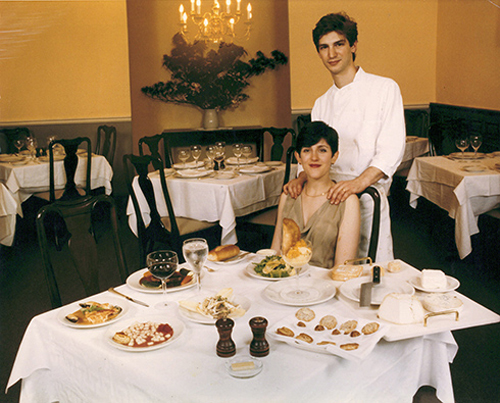DITCH THE MARKETING PLAN
I hate to be the bearer of bad news, but it’s likely that if you have a beautifully colour coded 12-month marketing plan sitting proudly somewhere on your desktop or cloud, you’ve been wasting your time.
According to many ‘leading industry figures’, it might take 2, even 3 years for the hospitality industry to ‘get back to normal’. Well hold on to your seat reader, because I’ve got news – it wasn’t ‘normal’ before Covid – and despite our collective refusal to face facts, it’s clear our customers, brands and familiar trading environment had slipped away from us a very long time ago.
A LOOK BACK
Consider the short but profound recent history of the hospitality industry. The 90’s were all about innovation and choice, with a boom of exciting new brands from grab and go to pubs to high end casual dining. The 00’s brought a shift to online, where websites enabled the customer to decide, almost in real-time, where to spend their cash. Then the birth of social, particularly Instagram in 2010 powered the era of the ‘experience economy’. Customers wanted to eat and drink, but they wanted it with bells on.
OUR CURRENT STATUS
But now the ‘millennials’ who drove the ‘experience economy’ are turning 40, and Gen Z are setting the agenda. Like groups before them, they still want to eat, drink and have fun – but this group do not remember a time before Spotify, Netflix and Deliveroo, so like everything else in their lives, they want their eating & drinking experience to be entirely on their own terms. With Gen Z (any human aged roughly between 18 and 25) accounting for 40% of the out of home market, not including the older groups they influence and are part of, this is a group no hospitality brand can afford to lose from their grasp.
And when you add to this the fact we’re going through one of the biggest social, economic and technological shifts in history for all groups – which has been even further accelerated by the pandemic – how could any of us rustle up an effective long-term plan for that?
Which is why, the yearly process of a board demanding a 12-18 (eighteen!) month marketing plan from their CEO, who in turn demands a colourful excel sheet from their marketing team, thick with key dates, menu launches, vanity social and ‘brand activation’ (which will all be pushed to one side in favour of a relentless campaign of discounting or ad hoc menu changes for many brands anyway) is at best a waste of everyone’s time – and at worst a yearly exercise in burying our heads even deeper in the hospitality sand.
If this approach paid dividends I’d be the first one telling you to crack on, but it doesn’t. So why do we do it? Well, mainly because it’s just what we’ve always done.
History isn’t clear on who first said “insanity is doing the same thing over and over and expecting different results”, but its relevance to the modern marketer has never been more keenly felt.
SO, IF NOT THIS, WHAT?
Rory Sutherland, advertising and behavioural science legend, tells the story of the ‘waggle dance’ bee.
Every morning 80% of the hives bees head out on a mission to their favourite haunts to collect as much nectar as possible. They’ve done their homework and know exactly where to find the best nectar and keep going back to fill their little nectar pouches with more and more.
But what happens, say, if the bees turn up to their favourite location to find a bunch of greedy cows have ravaged their flower patch? For the bees this could spell disaster, but it doesn’t – because the other 20% of the bees had been on a different kind of mission – to find the next untapped source of the best nectar. And they use their ‘waggle’ to show the rest of the bees exactly where to find it.
THE BEES AND MARKETING
While key dates and menu launches offer us a great content opportunity, they are not the basis of intelligent or effective marketing. In fact, research conducted by Feed it Back in Jan of this year revealed only a tiny fraction of people booking a ‘key date’ meal expect or even want a change of menu. And when you consider the average casual dining brand has a customer visit frequency of less than 3 times a year (according to our findings), you have to conclude that frequent menu changes are a colossal waste of time and money.
Instead, we should be gathering intelligence by getting deep into our data to surface the customer acquisition, conversion and retention opportunities which exist in the here and now, and use the creativity and innovation this sector is known for to EXPLOIT them to maximum effect – while keeping back 20% of our resource to identify and EXPLORE new trends in our data which will drive brand development and business resilience by enabling us to adapt when our nectar starts to run out. Just like our little bees. Want more amazing insight like this for your own business? Call us today.





